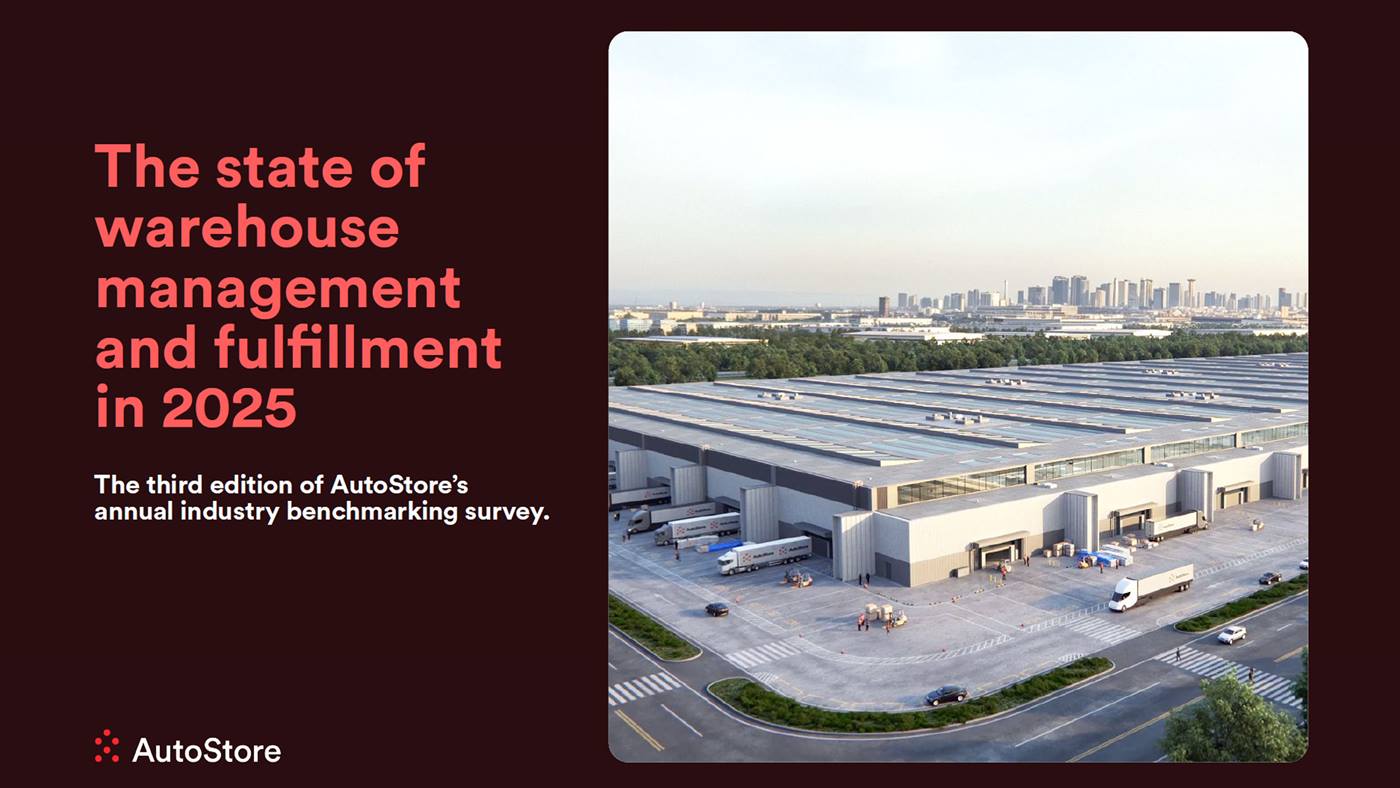Automation leads to profitable e-grocery
Tony Vendrig
22 maggio 2023
In this article, you'll discover the challenges and key drivers of automation profitability.

Grocers today are in a tough position in regard to online sales. If they don’t provide e-grocery services, they risk losing their share of a market that is projected to reach $2158 billion in global sales by the end of the decade.
But if they do, they risk losing money on every online order. The added costs associated with grocers picking orders for customers, rather than having customers do it themselves, are absorbed by the grocer, not customers, and that erodes already slim margins.
The effect on profitability can be particularly severe for grocers who outsource e-grocery to third parties. They not only sacrifice profitability, but they also give up control of the e-grocery brand experience and could lose the customer relationships they’ve built if the third-party decides to go direct or mishandles the customer experience.
But regardless of the approach they’ve taken, grocers offering e-grocery services today are counting on those services becoming profitable sometime in the future.
Not all grocers, however, have been so fortunate. That’s because automating e-grocery processes is less forgiving than automating other types of e-commerce. From the multi-temperature complexity of the typical e-grocery order to the continuous drumbeat of pickups and deliveries to the importance of managing inventory to best-by dates, e-grocery has very specific requirements that can only be met by the right combination of technology, expertise and experience.
So, it isn’t just “automation” that can make e-grocery profitable; it’s the right automation strategy executed in the right way.
1. Scale matters, but bigger isn’t always better.
Order volumes must reach a certain point to justify the investment in automation, but when e-grocery fulfillment centers get too far away from customers increased transportation costs and longer delivery times can offset economies of scale. Work with your automation partner to establish a distribution strategy that optimizes scale and service.
2. Prioritize storage density.
In e-grocery, density drives efficiency, and it starts with technology selection. Cube-based storage systems have the highest density of any e-grocery automation system and can meet the reliably high-throughput requirements of e-grocery fulfillment when configured properly. This density enables a higher percentage of the products being offered to customers to be picked through automation, maximizing efficiency. When configured properly, these systems enable approximately 80% of products to be picked through automation.
3. Ensure software is e-grocery capable.
Generic e-commerce control software typically lacks the specific functionality required to meet the inventory and order management requirements of e-grocery fulfillment. Look for software that can provide single-system control and orchestration of all the processes and systems within the fulfillment center, and with inventory management capabilities that enable real-time inventory tracking and management of items by shelf life and best-by dates.
4. Don’t treat consolidation as an afterthought.
Order consolidation and staging can be as important to e-grocery success as efficient item picking, especially for grocers supporting multiple last-mile options. For mid-sized and larger centers, automating consolidation is a viable option and can improve order accuracy and enable more efficient delivery.
5. Consider design specs as your performance baseline.
Your profitability depends on the automation system meeting design specifications, but you shouldn’t settle for that. It isn’t unusual for grocers deploying well-designed automation to achieve 5-10% improvements over the metrics the system was designed to achieve—and that were used to justify it. There are always opportunities to improve the KPIs after a system is deployed. For example, one of our customers found that increasing restocking frequency from 3 days to 2.5 days freed up storage for more longtail items and improved picking efficiency.
But if they do, they risk losing money on every online order. The added costs associated with grocers picking orders for customers, rather than having customers do it themselves, are absorbed by the grocer, not customers, and that erodes already slim margins.
The effect on profitability can be particularly severe for grocers who outsource e-grocery to third parties. They not only sacrifice profitability, but they also give up control of the e-grocery brand experience and could lose the customer relationships they’ve built if the third-party decides to go direct or mishandles the customer experience.
But regardless of the approach they’ve taken, grocers offering e-grocery services today are counting on those services becoming profitable sometime in the future.
The Promise (and Challenge) of E-grocery Automation
The good news is that automating e-grocery fulfillment has already allowed some grocers to transform online sales into a growing, profitable business. These leaders, like San Antonio-based H-E-B are serving as a beacon for other grocers seeking to capitalize on the demand for e-grocery services.Not all grocers, however, have been so fortunate. That’s because automating e-grocery processes is less forgiving than automating other types of e-commerce. From the multi-temperature complexity of the typical e-grocery order to the continuous drumbeat of pickups and deliveries to the importance of managing inventory to best-by dates, e-grocery has very specific requirements that can only be met by the right combination of technology, expertise and experience.
So, it isn’t just “automation” that can make e-grocery profitable; it’s the right automation strategy executed in the right way.
Keys to Profitability
At Swisslog we’ve worked with leading grocers to automate fulfillment processes in ways that enable profitability. Based on our experience, here are five tips for shaping an automation strategy that will lower fulfillment costs and improve margins.1. Scale matters, but bigger isn’t always better.
Order volumes must reach a certain point to justify the investment in automation, but when e-grocery fulfillment centers get too far away from customers increased transportation costs and longer delivery times can offset economies of scale. Work with your automation partner to establish a distribution strategy that optimizes scale and service.
2. Prioritize storage density.
In e-grocery, density drives efficiency, and it starts with technology selection. Cube-based storage systems have the highest density of any e-grocery automation system and can meet the reliably high-throughput requirements of e-grocery fulfillment when configured properly. This density enables a higher percentage of the products being offered to customers to be picked through automation, maximizing efficiency. When configured properly, these systems enable approximately 80% of products to be picked through automation.
3. Ensure software is e-grocery capable.
Generic e-commerce control software typically lacks the specific functionality required to meet the inventory and order management requirements of e-grocery fulfillment. Look for software that can provide single-system control and orchestration of all the processes and systems within the fulfillment center, and with inventory management capabilities that enable real-time inventory tracking and management of items by shelf life and best-by dates.
4. Don’t treat consolidation as an afterthought.
Order consolidation and staging can be as important to e-grocery success as efficient item picking, especially for grocers supporting multiple last-mile options. For mid-sized and larger centers, automating consolidation is a viable option and can improve order accuracy and enable more efficient delivery.
5. Consider design specs as your performance baseline.
Your profitability depends on the automation system meeting design specifications, but you shouldn’t settle for that. It isn’t unusual for grocers deploying well-designed automation to achieve 5-10% improvements over the metrics the system was designed to achieve—and that were used to justify it. There are always opportunities to improve the KPIs after a system is deployed. For example, one of our customers found that increasing restocking frequency from 3 days to 2.5 days freed up storage for more longtail items and improved picking efficiency.
Proven E-grocery Automation Expertise
At Swisslog, we’ve worked with grocers just launching e-grocery services, transitioning away from third parties and moving from manual picking to automation. We have a track record for delivering e-grocery automation that meets or exceeds projected results within weeks of startup. And every grocer we have worked with has been able to build on that initial success and improve performance through various optimization strategies. For more information on how to use automation to make e-grocery sales profitable, contact Swisslog.











